Ichiban Dashi (number one dashi) is the backbone of Japanese cuisine. Dashi brings the umami richness through lightly simmered kombu and bonito flakes. Ready in 30 minutes, this quick soup stock is a Japanese household staple to take your hot pots and soups to the next level!
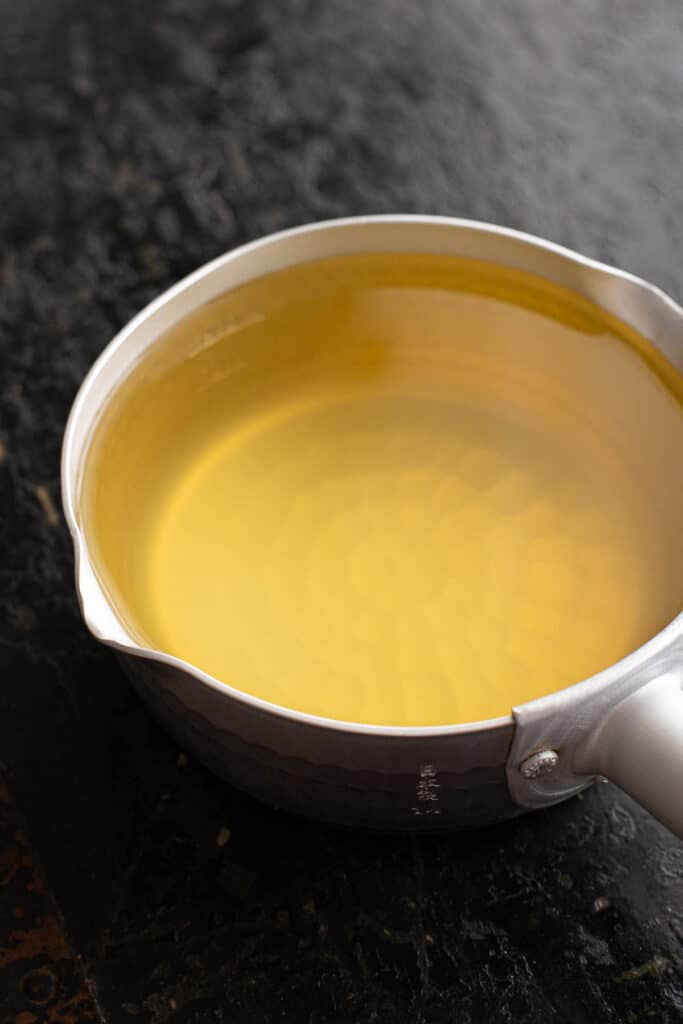
Why We Love This
Dashi is the key ingredient to Japanese cuisine! It brings that classic umami flavour without tasting fishy.
It’s so simple to make fresh dashi stock at home and much healthier and commercial dashi stock powder too. Made with natural ingredients – no fake flavour enhancers here! – it’s easy to adapt to your preference too. Soak the kelp for a shorter time to get cooking faster, or soak it longer to bring out a deeper, richer flavour.
You can even use the leftover kelp and bonito flakes to make your own rice seasoning (furikake), so everything is used and there’s no food waste.
Related: Kenchinjiru Soup / Oden Fish Cake Stew
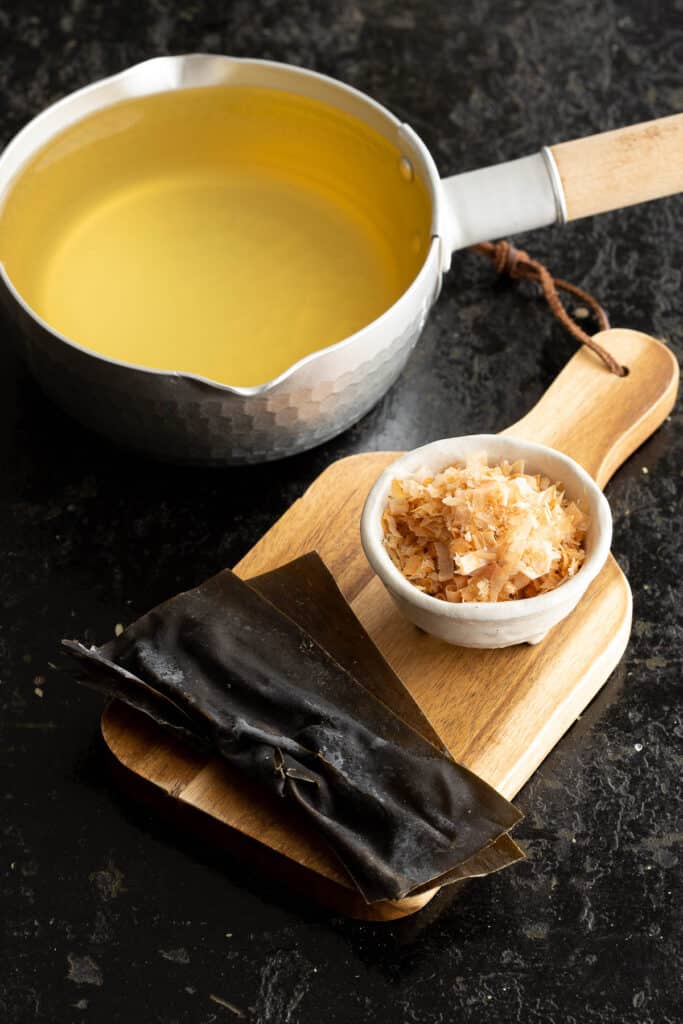
What is Dashi?
Dashi is a popular variety of Japanese soup stocks, with the most commonly used being Ichiban Dashi / Awase Dashi – a three ingredient dashi made from water, katsuobushi and kombu.
You’ll find dashi in Japan’s most famous dishes, including takoyaki, okonomiyaki, shabu shabu and nikujaga. You can even use it as a simple stock for onsen tamago (hot spring eggs).
What is Dashi Powder?
In many places it can be hard to track down the ingredients to make fresh dashi from scratch, which is where dashi powder is becoming very popular to use instead. Dashi powder is great when you’re short on time, travelling or camping, or can’t get the ingredients. It’s now widely found in most big supermarkets or Asian grocers.
We use a ratio of 1 tsp of dashi powder for every cup of water (250ml / 8.45fl oz), but some people prefer a milder flavour and in that case use only 1/2 tsp of dashi per cup.
For those that haven’t used it before, it’s very similar to reaching for the chicken or vegetable stock powder in Western cuisines.
Dashi Variations
- Ichiban Dashi / Awase Dashi – Full strength dashi made from katsuobushi and kombu. This is the recipe we’re sharing today, and one of the most popular used in Japan!
- Niban Dashi – A half strength dashi made from the leftovers of ichiban dashi, sometimes made by adding a little more fresh katsuobushi for extra flavour. Mostly used for miso soup, but you could also use it in zosui rice soup.
- Kombu Dashi – This is the vegan and vegetarian friendly version that uses only kelp / kombu and omits the katsuobushi.
- Shiitake Dashi – Made with shiitake mushrooms, this is also vegan and vegetarian friendly.
- Katusobushi Dashi – Made with katsuobushi only – no kombu!
- Iriko / Niboshi Dashi – Made with sardines or anchovies, this is more commonly found in Korean based dishes and called dasima in Korean.
Where We Learned This
We were lucky enough to learn about dashi from quite a few friends and acquaintances we met along our many trips through Japan. Two that stand out to us are from one of our “Osaka Mums”, Yoshiko, who teaches homestyle Japanese cooking, and the other is from a chef in Okayama who was taught by her grandmother. Both styles taught us so many tips for the perfect dashi broth that we can’t wait to share with you!
What You’ll Need
- Dried Kelp / Kombu – A core ingredient for dashi, dried kelp is usually available at Asian grocers, or you may be able to source it locally depending on where you live.
- Bonito Flakes / Katsuobushi – Bonito Flakes (Katsuobushi in Japanese) are skipjack tuna flakes that have been simmered, smoked and fermented to help give dashi the umami kick.
- Water – Filtered or spring water will give you the cleanest and best tasting dashi. However, it’s fine to use tap water if you need.
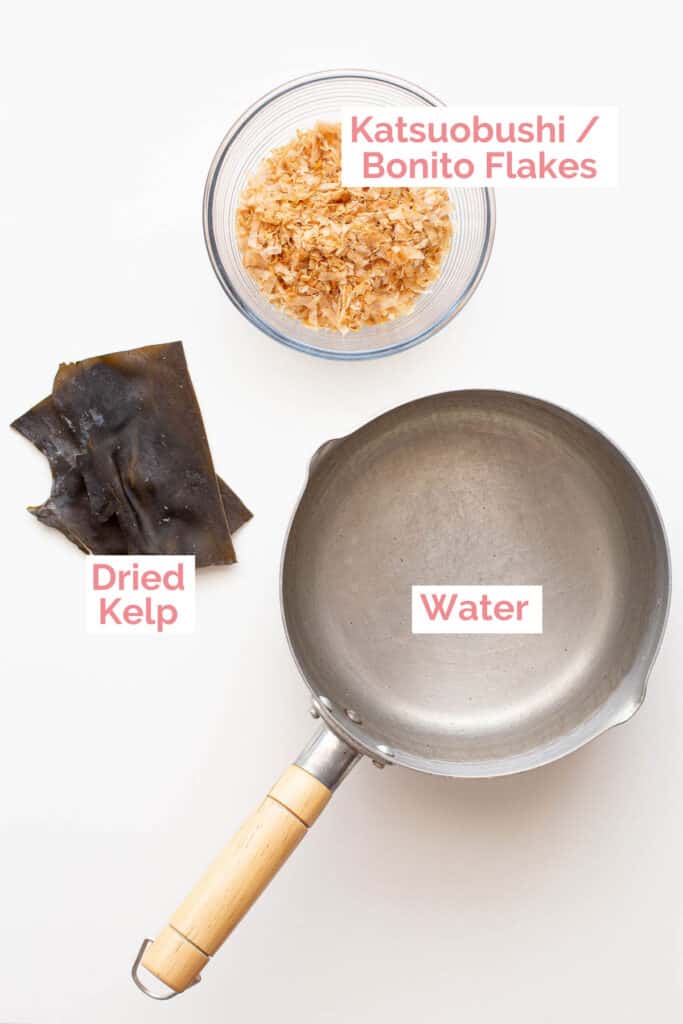
How to Make Ichiban Dashi at Home:
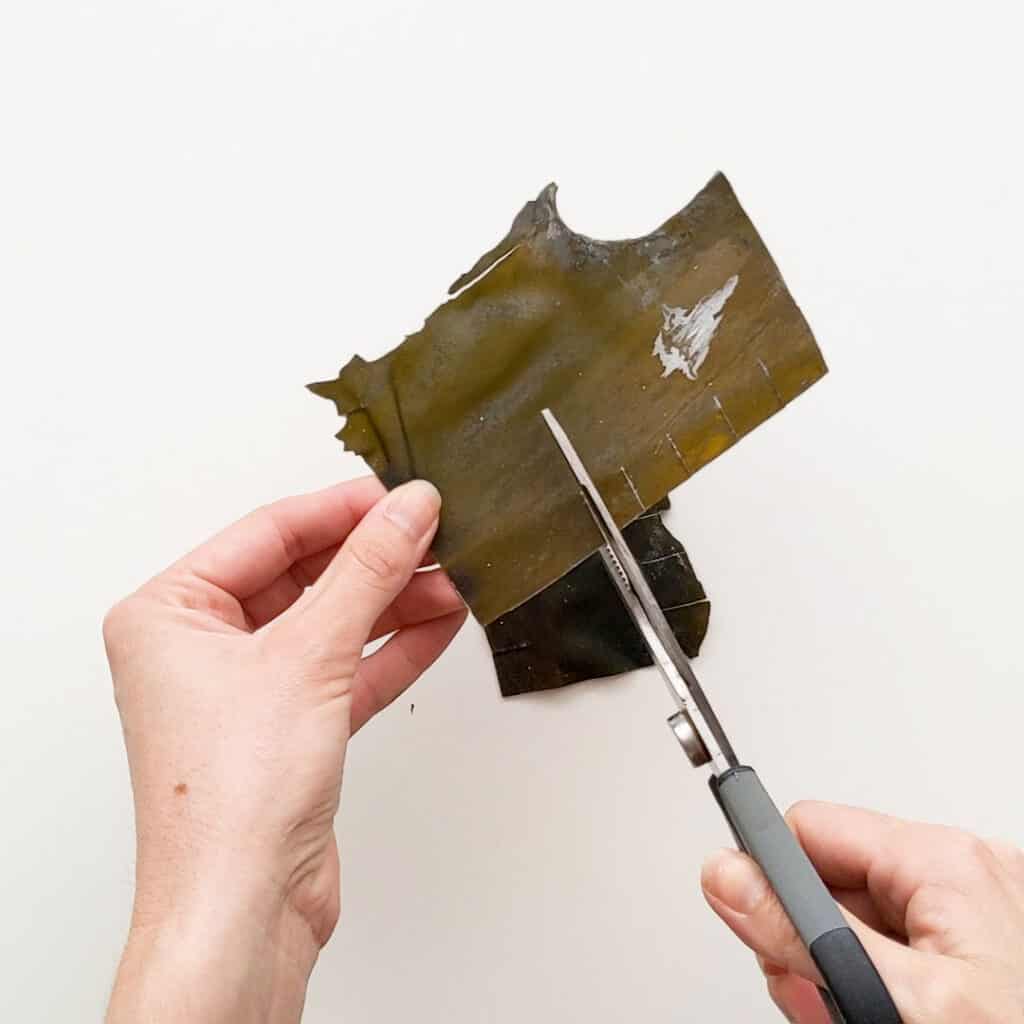
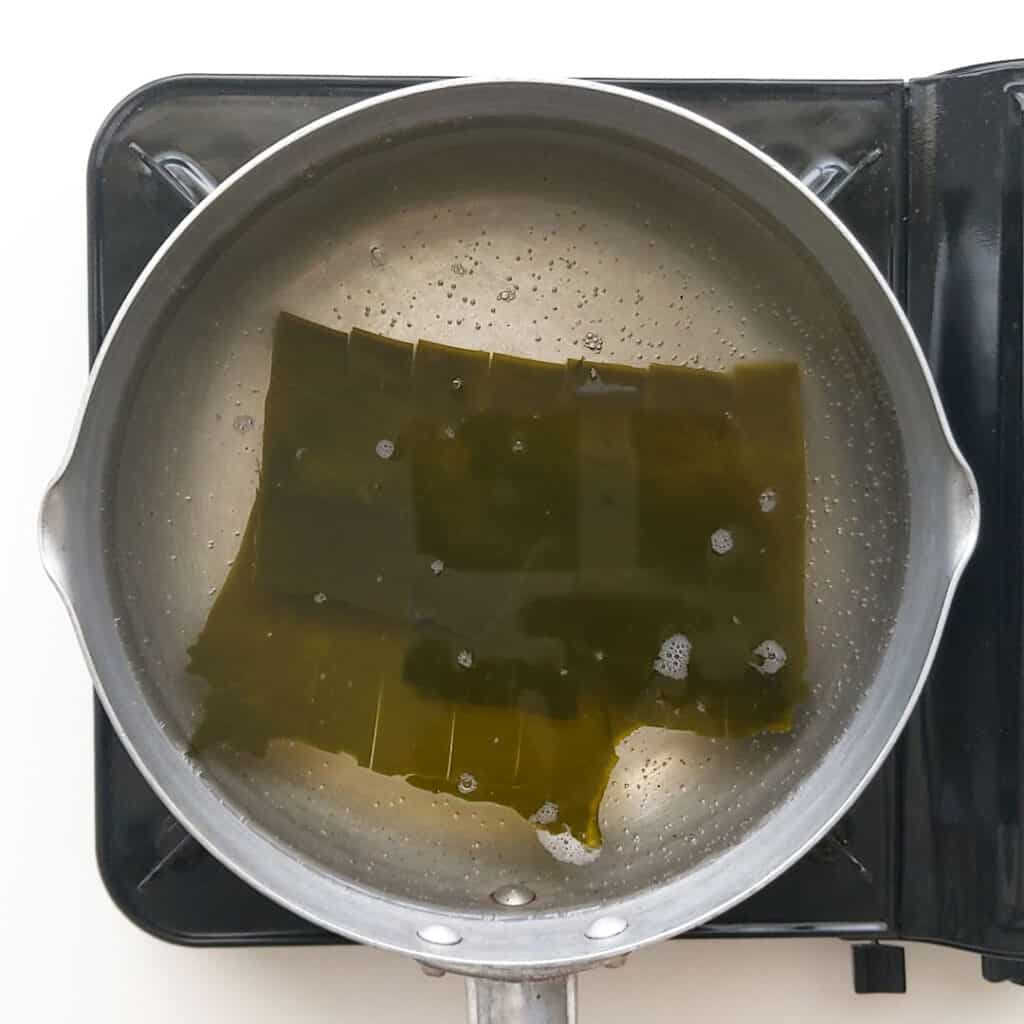
- Using scissors, cut 1-2cm / ½ inch slits along the sides of the kombu to open up the flavour.
- Pour the water into a medium saucepan and add the kombu. Allow to soak for 15 minutes for a quick dashi, or overnight for a rich dashi stock.
- Place the saucepan over a low-medium heat, and once you see small bubbles start to form on the bottom of the pan (around 5-10 minutes), remove the kombu.
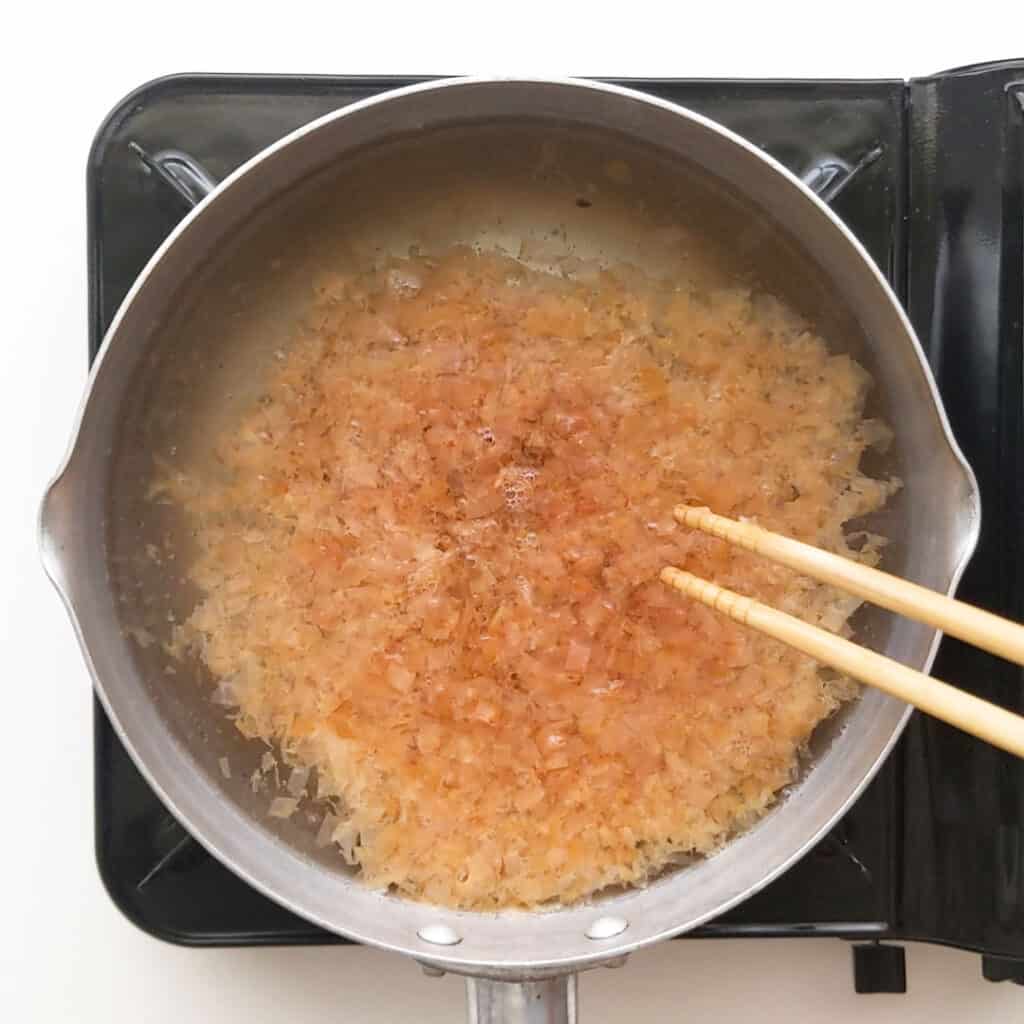
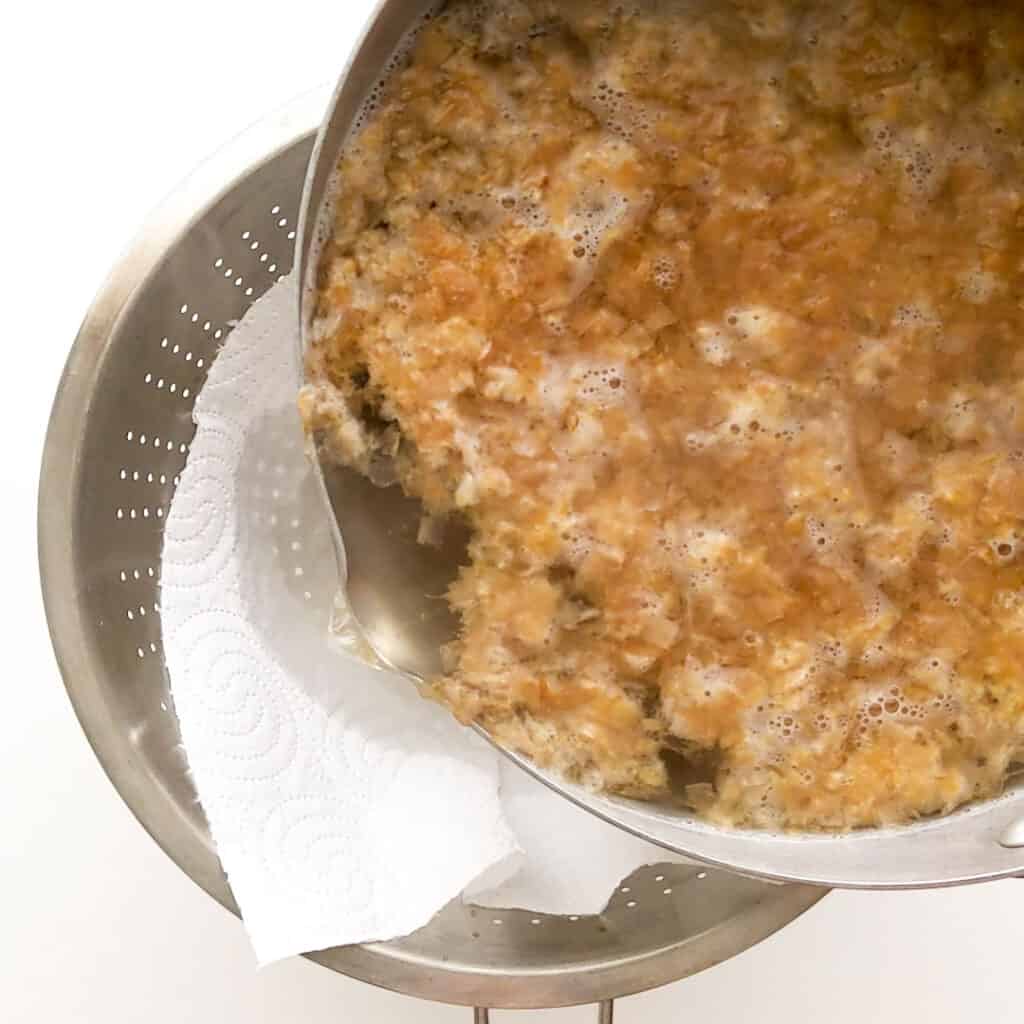
- Pour the bonito flakes into the water, but don’t stir, just lightly press with chopsticks or a spoon to make sure they’re all submerged. Simmer gently for a minute before switching off the heat. Stand for a few minutes and allow the flavours to bloom.
- Place a colander and paper towel or cloth over a medium bowl and slowly strain the dashi through, catching the bonito flakes in the colander. Alternatively, allow the bonito flakes to sink to the bottom, and carefully ladle out the liquid dashi stock.
- Use immediately or store in the fridge in an airtight container for 2-3 days or in the freezer for 1-2 months.
Ichiban Dashi vs Niban Dashi
Ichiban Dashi means “first stock”, it is the strongest dashi stock and what is used in most Japanese recipes that call for dashi stock.
Niban Dashi means “second stock”, it is a weaker dashi stock made from the leftover kombu (kelp) and katsuobushi (bonito flakes). This second stock is mainly used for making miso soup.
If you want to make niban dashi after making ichiban dashi, the steps are simple!
Making Niban Dashi
Place the used kombu and katsuobushi back into the medium saucepan and add 4 cups of spring water / filtered water.
Heat over a medium heat for 5-6 minutes, bringing it to a gentle simmer with small bubbles on the bottom of the pan (just under boiling). Add 15g of new katsuobushi and continue to simmer for a minute before switching the heat off.
Allow to cool and steep for a few minutes, then strain and use straight away or store in an airtight container.
Wandercook’s Tips
- Cooked Kombu – Once the kombu / kelp is cooked, you’ll notice it’s quite slimy and slippery when you go to remove it, this is completely normal.
FAQs
If you can’t source kombu or katsuobushi, you can make any of the other variations of dashi – including from shiitake mushrooms or even dried anchovies/sardines!
There are so many uses for used kombu and katsuobushi, so don’t throw them away! If you’ve made ichiban dashi, you can always make niban dashi (a half strength, second cook through of the ingredients), kombu and bonito tsukudani, chop up and top on okonomiyaki or feed it to your chooks!
Our Favourite Recipes Using Ichiban Dashi / Awase Dashi
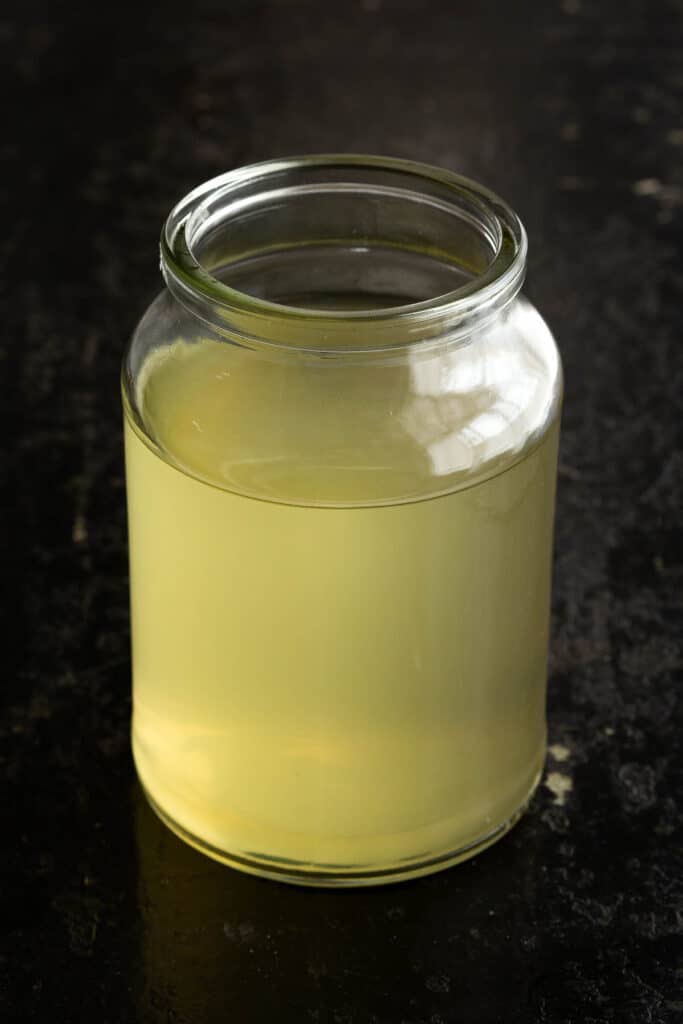
Make more Japanese basics from scratch with these popular recipes:
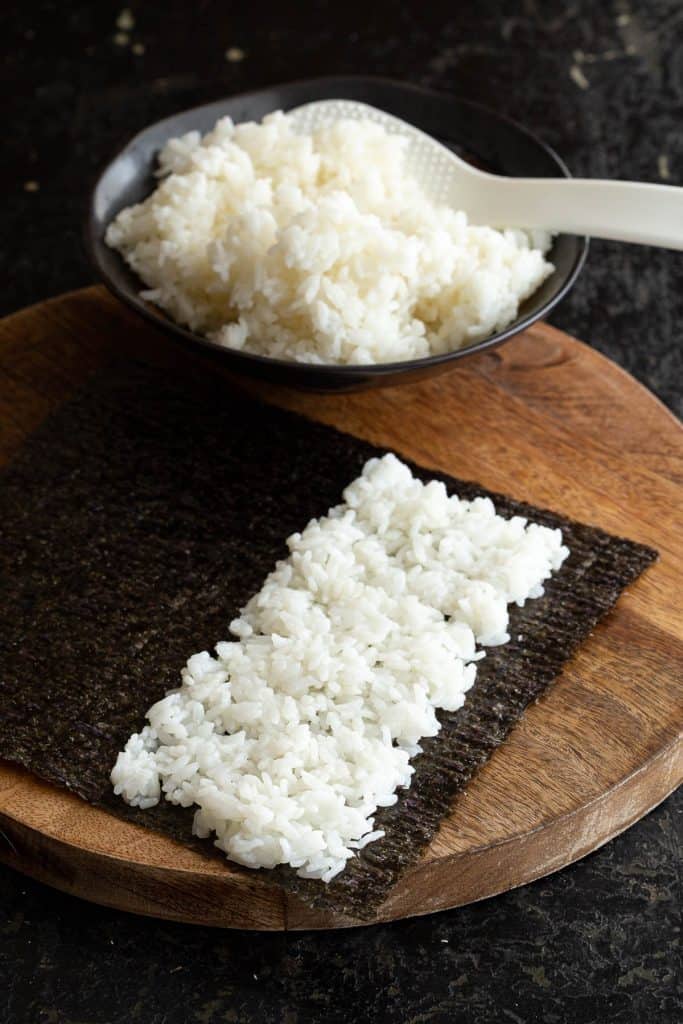
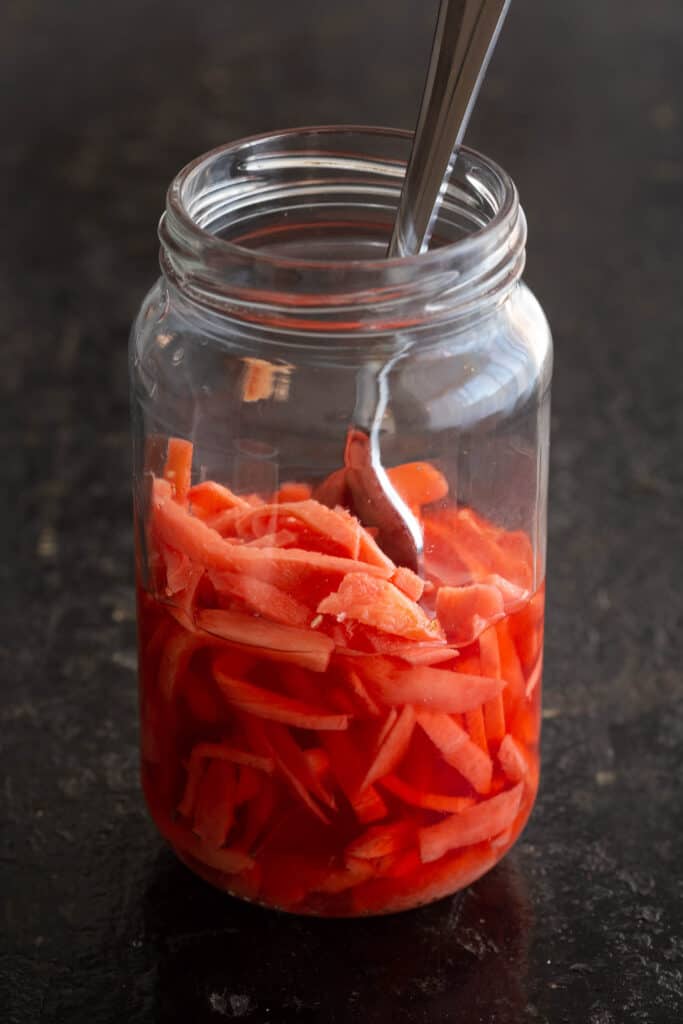
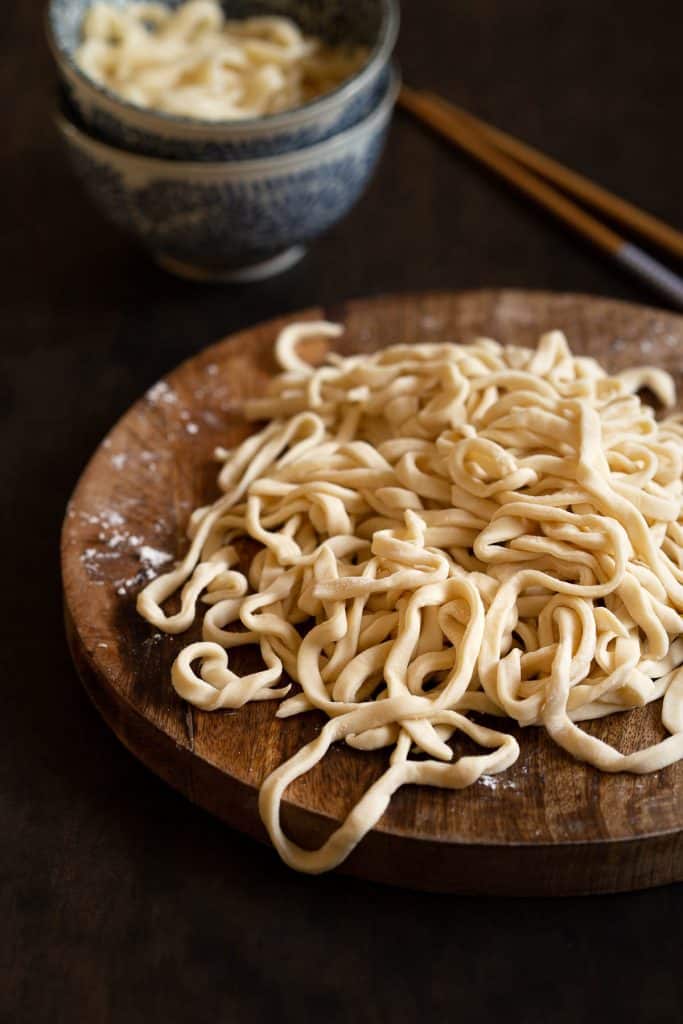
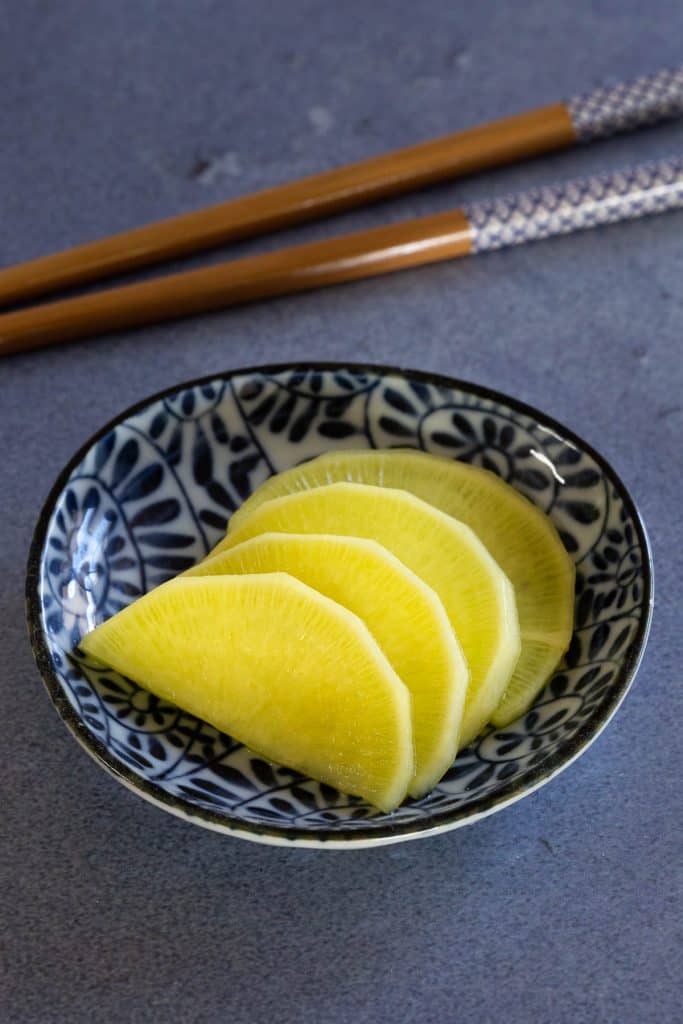
★ Did you make this recipe? Please leave a comment and a star rating below!
Equipment
Ingredients
- 4 cups water filtered or spring water
- 8 g dried kelp / kombu around 1-2 pieces, 4 in / 10cm long
- 15 g bonito flakes / katsuobushi
Instructions
- Using scissors, cut 1-2cm / ½ inch slits along the sides of the kombu to open up the flavour.8 g dried kelp / kombu
- Pour the water into a medium saucepan and add the kombu. Allow to soak for 15 minutes for a quick dashi, or overnight for a rich dashi stock.4 cups water, 8 g dried kelp / kombu
- Place the saucepan over a low-medium heat, and once you see small bubbles start to form on the bottom of the pan (around 5-10 minutes), remove the kombu.
- Pour the bonito flakes into the water, but don't stir, just lightly press with chopsticks or a spoon to make sure they're all submerged. Simmer gently for a minute before switching off the heat. Stand for a few minutes and allow the flavours to bloom.15 g bonito flakes / katsuobushi
- Place a colander and paper towel or cloth over a medium bowl and slowly strain the dashi through, catching the bonito flakes in the colander. Alternatively, allow the bonito flakes to sink to the bottom, and carefully ladle out the liquid dashi stock.
- Use immediately or store in the fridge in an airtight container for 2-3 days or in the freezer for 1-2 months.
Video
Nutrition
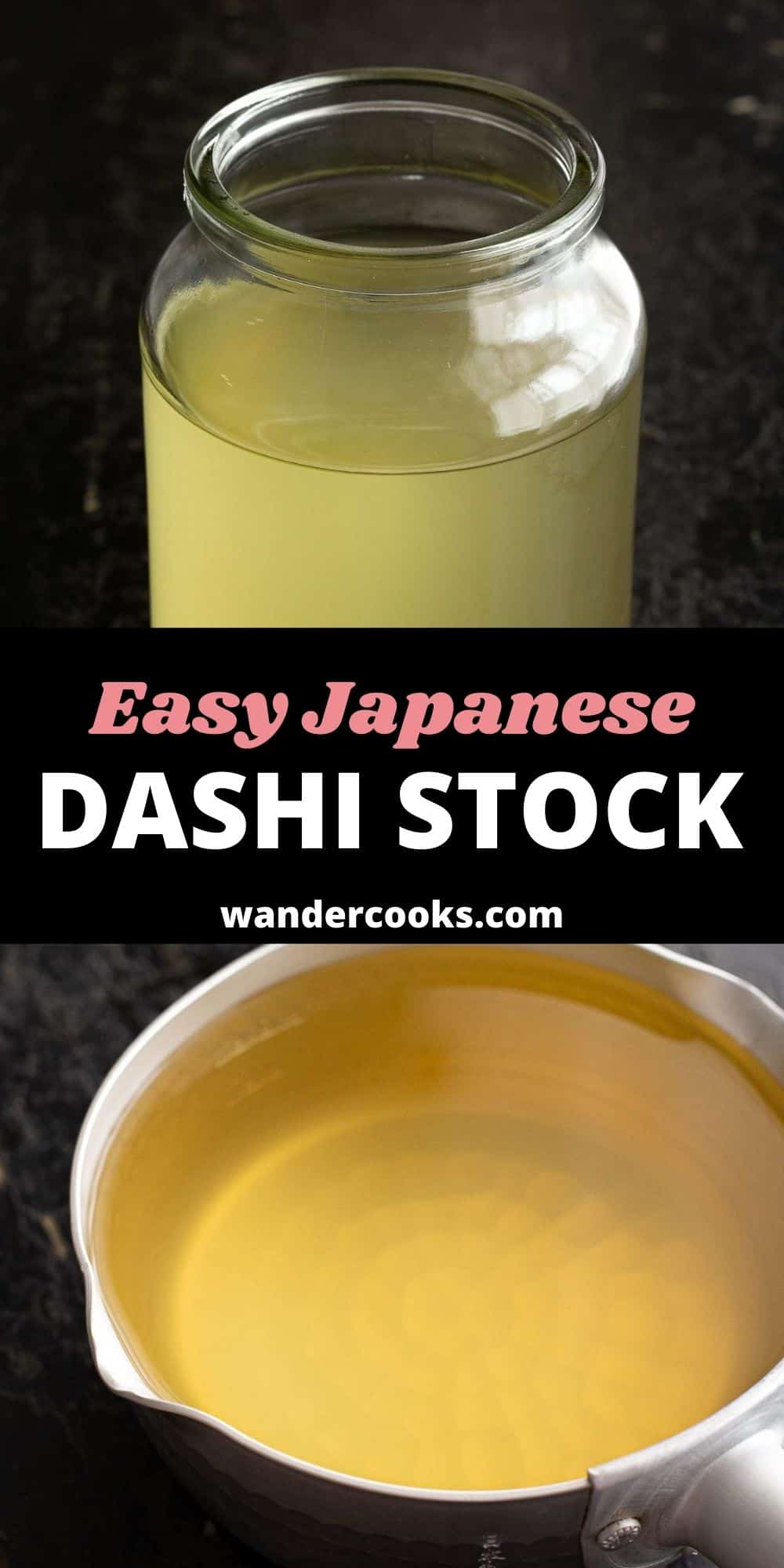

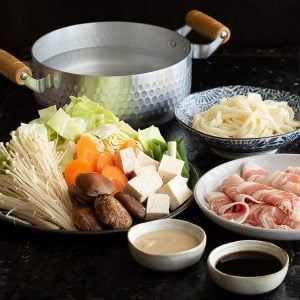
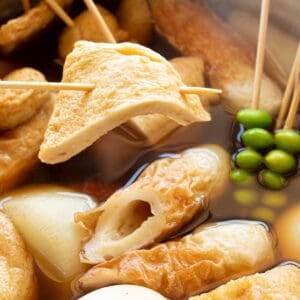
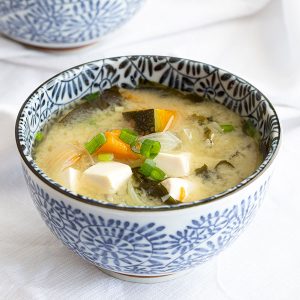


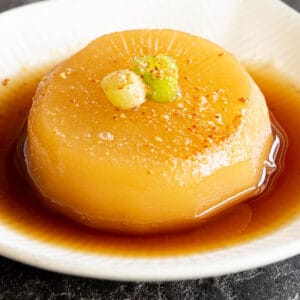
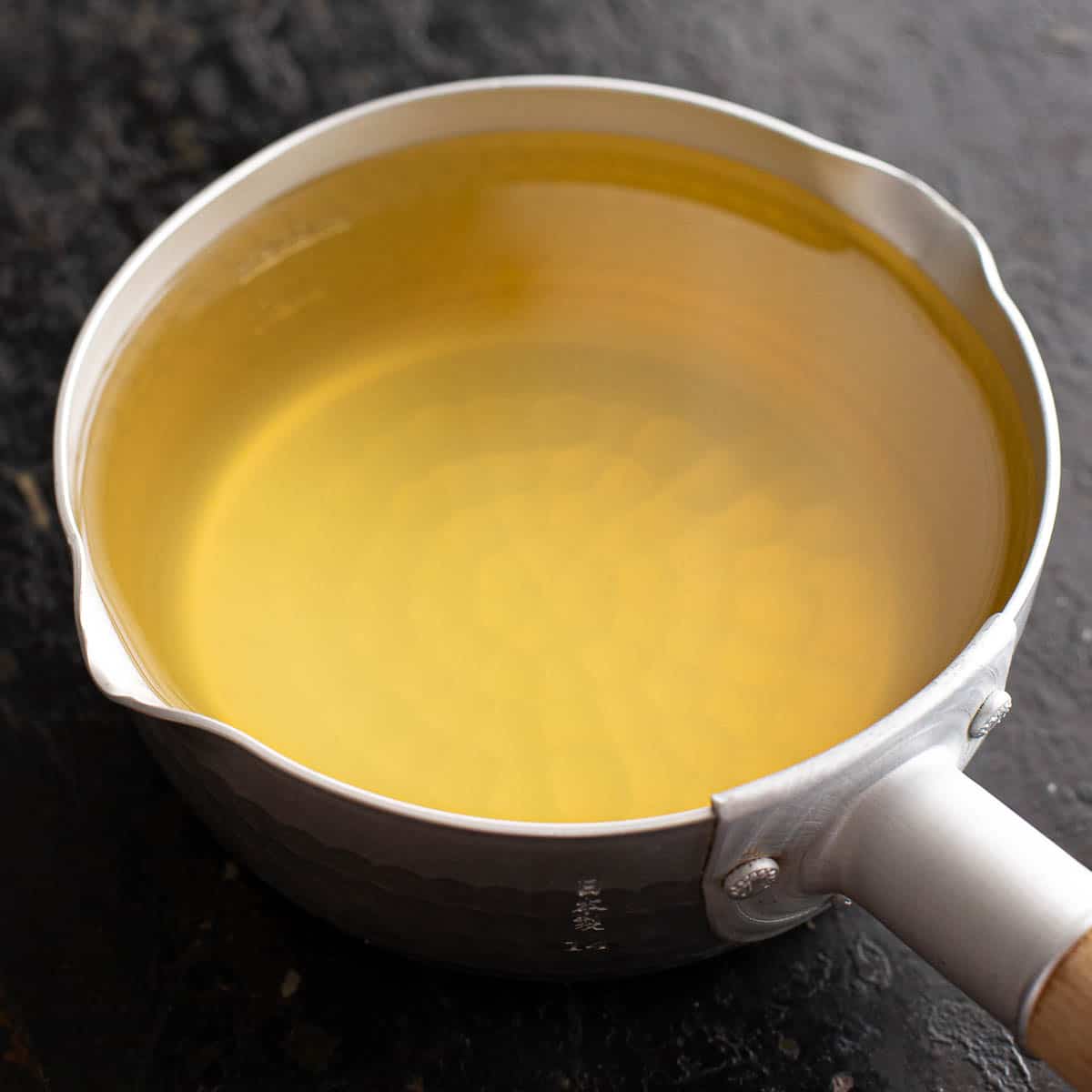


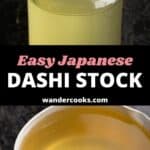
2 Comments
CAROLINE URQUHART
27/02/2024 at 2:03 amI want to make Mentsuyu for Takoyaki. But it is asking for Dashi Powder. Can i use fresh homemade Dashi and how much compared to powder,(as i want to make it all from scratch) no store bought stuff.
ARIGATO, Caroline
Wandercooks
27/02/2024 at 3:54 pmHi Caroline, feel free to use our takoyaki recipe that uses dashi stock instead of mentsuyu – https://www.wandercooks.com/quick-and-easy-takoyaki-recipe/
Mentsuyu is a concentrated sauce, which is why it uses dashi powder vs stock. You could add a couple of tablespoons of fresh dashi stock and 1/4 tsp salt as an alternative if you’re still wanting to use the mentsuyu instead.